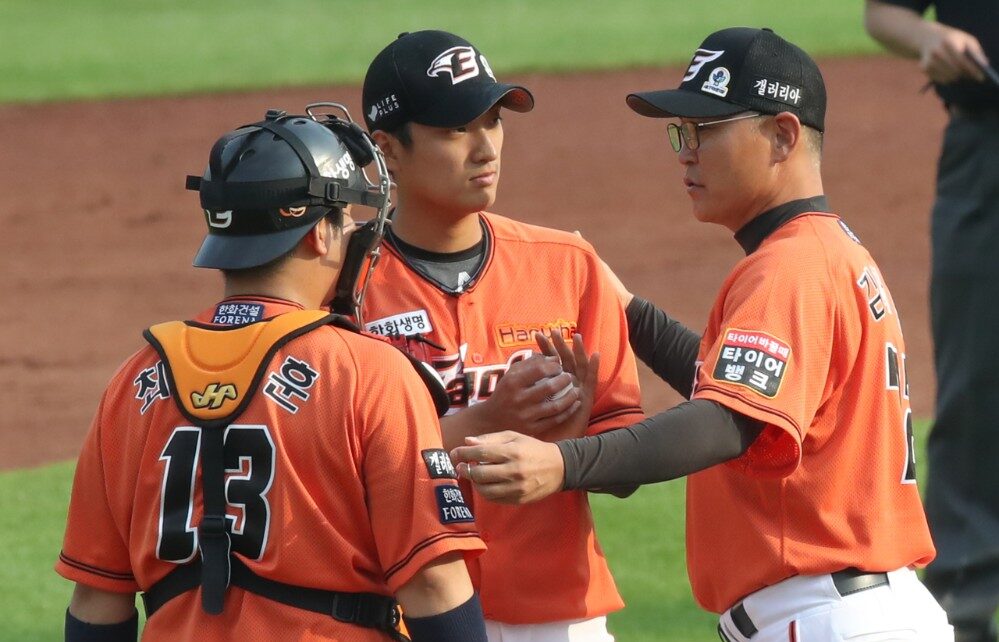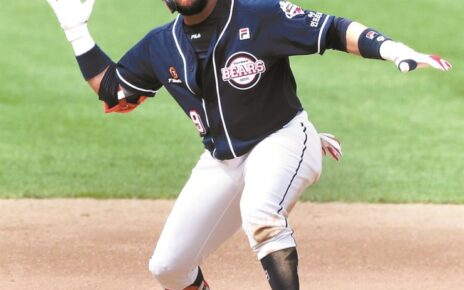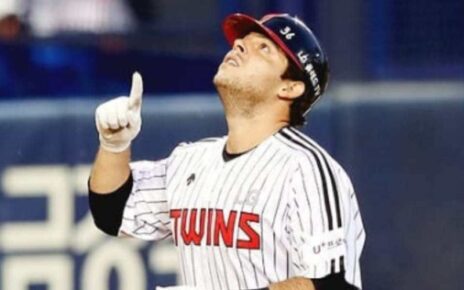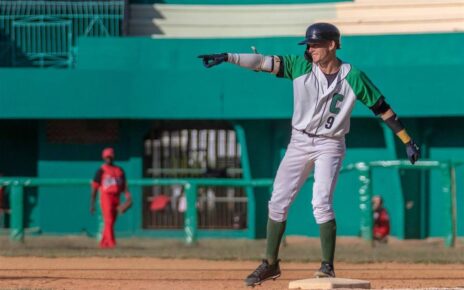In his second start of the 2020 Korea Baseball Organization season, starting right-hander Min-woo Kim looked like the Hanwha Eagles first overall pick from the 2015 Draft. Kim, 24, exterminated the Lotte Giants with 98 pitches in 7 solid innings. He allowed just 2 hits and 1 run, while striking out 6 opponents to accumulate a Game Score of 72 points. But do you know what was even more surprising in Kim’s May 17th start? He finished with a 1.96 ERA on the season, through 18.1 innings!
Obviously, you may think that we shouldn’t define such a start to the season as a considerable feat. But for a pitcher who compiled a 6.86 ERA in his five-season KBO career, it definitely seemed like a promising start. And that sounded like good news to the Eagles, at least as the team struggled with a poor .240/.301/.340 line in its first 27 games and just 3.4 runs scored per game.
After cumulative ERA inconsistencies between 2015 and 2019 — 5.14, 15.83, 17.18, 6.52, 6.75 — it seemed as if Kim had finally figured out how to properly mix his pitches. In fact, Kim tweaked his repertoire giving more prominence to his splitter and curveball instead of throwing his sinker as much. However, after coming 1 out short of a Quality Start against the NC Dinos on May 23, Kim was again punished by his opponents.
Thereafter, Kim put up an 11.25 ERA in his last three starts of the season, allowing 15 earned runs — plus six home runs — in his last 12 innings. Following that sudden low, Won-ho Choi, the Eagles’ manager, was quick to move and dropped Kim from the pitching rotation.
We know that Kim has basically never been a dominant pitcher. He also doesn’t have a powerful arm nor the ability to be a strikeout pitcher. In fact, Kim had a 15.0 K% prior to this 2020 season, and last year he allowed .325 BABIP. However, even after seeing how Kim’s approach reverted after his first 270 pitches — in two starts and a relieved game this season — there were interesting trends to watch. Kim’s new approach, combining more fastballs and splitters with an efficient curveball, helped him strike out more than usual and that is worth digging into.
From a 14.6 K% in 2019, Kim struck out 22.8% through his first three games this season. Yes, it was a good start! But also, despite being bombarded in his last three starts, Kim still lowered his BABIP to .255, a reasonable result when combined with the improvements in his strikeout rate. What issue did Kim develop after his first three appearances? Can Kim make the adjustments he needs if he finds his way back to the rotation? We should definitely dig deeper here.
Kim’s New Attack Mix
Basically, Kim’s great adjustment was that he changed his high sinker utilization rate (25.4%), to give more prominence to the split, fastball, and the curveball. Here we can better illustrate how Kim changed the management of his pitches this season, according to data obtained from Statiz.
After mixing sinker, split, fastball, curveball, and slider in that order, Kim explored throwing more of his splitter in conjunction with the fastball and curveball. With the more recent strategic twist, Kim found some success before eventually faltering. In addition to his uptick in strikeouts, his new pitch mix seemed deadly at one point. So what was the main problem within the trends? Let’s explore more!
As you can see, Kim was more effective than his disastrous 11.25 ERA in his last three starts apparently shows. Kim’s unfriendly curveball became an excellent killing weapon to mix with a fastball that normally grazed 88-89 mph. Also, Kim’s splitter was elusive, but as we can see from his performance, the command was not good enough in his last four starts. For that reason, when it came to his main pitching, Kim was punished without compassion by his opponents.
The regressions were revealing! And, as we saw before, Kim’s splitter couldn’t hold up. He lost command of that pitch and the results were disastrous. Usually, Kim tried to attack the strike zone, but ended up receiving punishment. Let’s visualize at what level opponents crushed Kim’s splitter:
Contact against Kim in the strike zone was becoming unstoppable. Opponents were freely teeing off on each splitter. But the most exaggerated is that the level of contact was at least 80% in 11 of the 25 areas tracked by Statiz.
Let’s finally look at how those contact rates translated to damage:
We start at the hottest point, the center of the strike zone. There, Kim’s opponents crushed his splitter mercilessly, averaging 1.000 slugging. Really, where Kim suffered the most from his command failures was when he left pitches hanging at the top of the strike zone. When Kim managed to find his command and better locate his splitter, he got better results.
However, where the Eagles need their right-hander Min-woo Kim the most, is proving that he can be more than a promise to the organization. And for that, Kim will have to learn from past mistakes and carry out an even more effective change in approach.
Yes, the challenge is increasing. And the time for patience is over.
Lead photo courtesy of Unknown – Yonhap News




